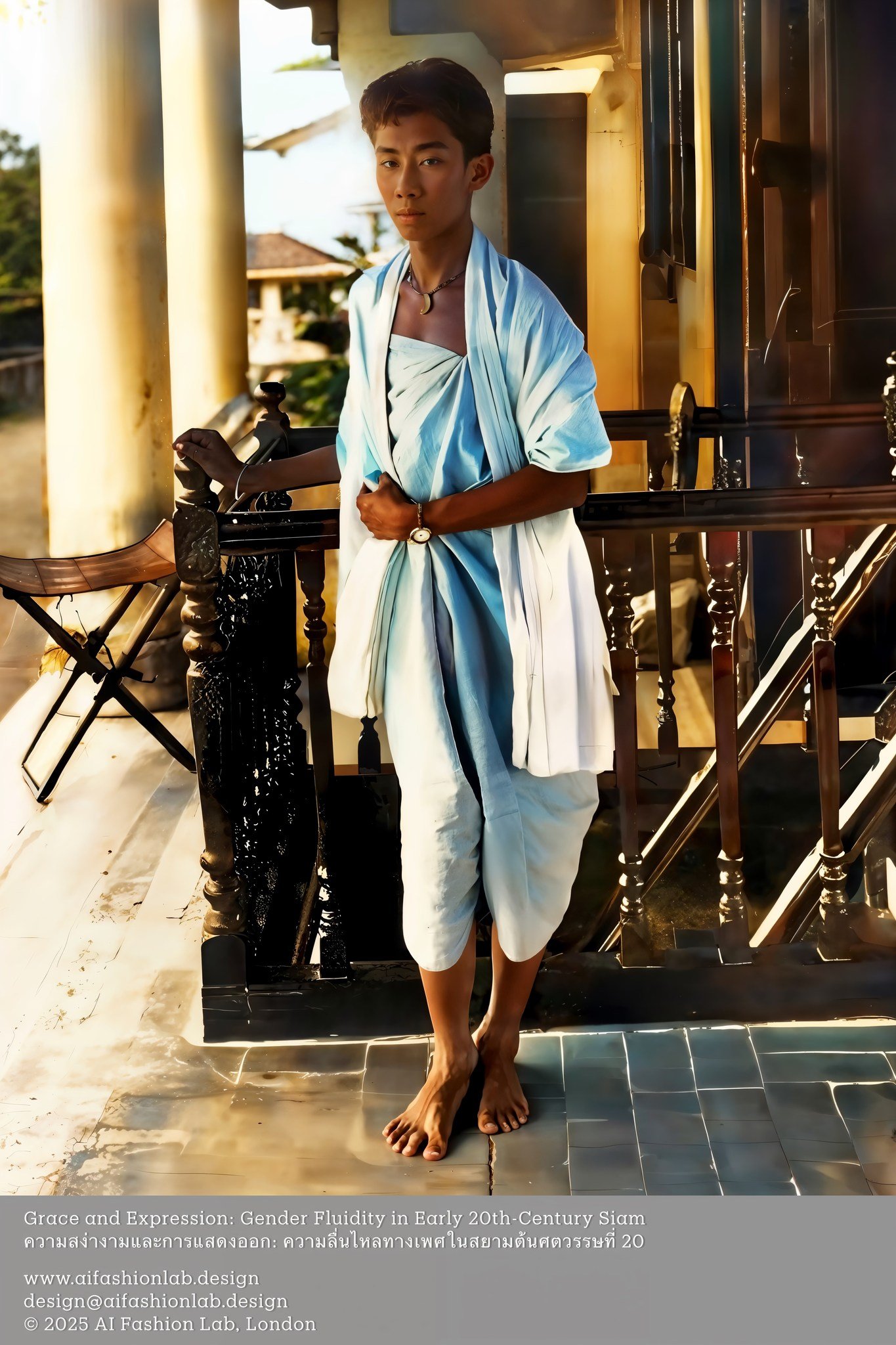Exploring Gender and Identity in Early 20th-Century Siam
These images offer a unique glimpse into early 20th-century Siam, during the transformative reign of King Rama VI (1910–1925). They depict young men dressed in women’s attire, blending traditional Siamese clothing such as the pha-nung and sabai with a clear exploration of gender presentation. These outfits may reflect artistic expression, theatrical performance, fancy dress, or even early expressions of transgender identity, showcasing the fluidity of gender roles during a time of cultural evolution.
The reign of King Rama VI was marked by the blending of traditional Siamese values with the growing influence of Western modernity. Globally, this era saw increasing scrutiny of masculinity and rigid gender expectations shaped by Edwardian norms. In Siam, however, the arts provided a space where traditional forms of gender fluidity persisted. Theatrical performances, especially khon and lakhon, maintained a long-standing tradition of cross-dressing, offering socially acceptable venues to explore identity beyond societal constraints.




